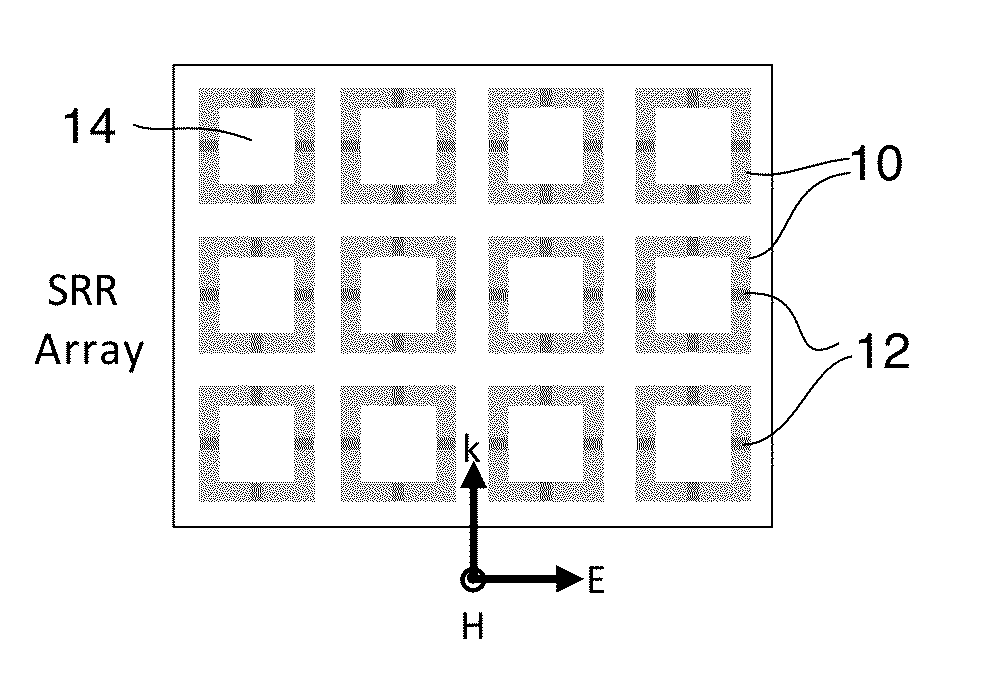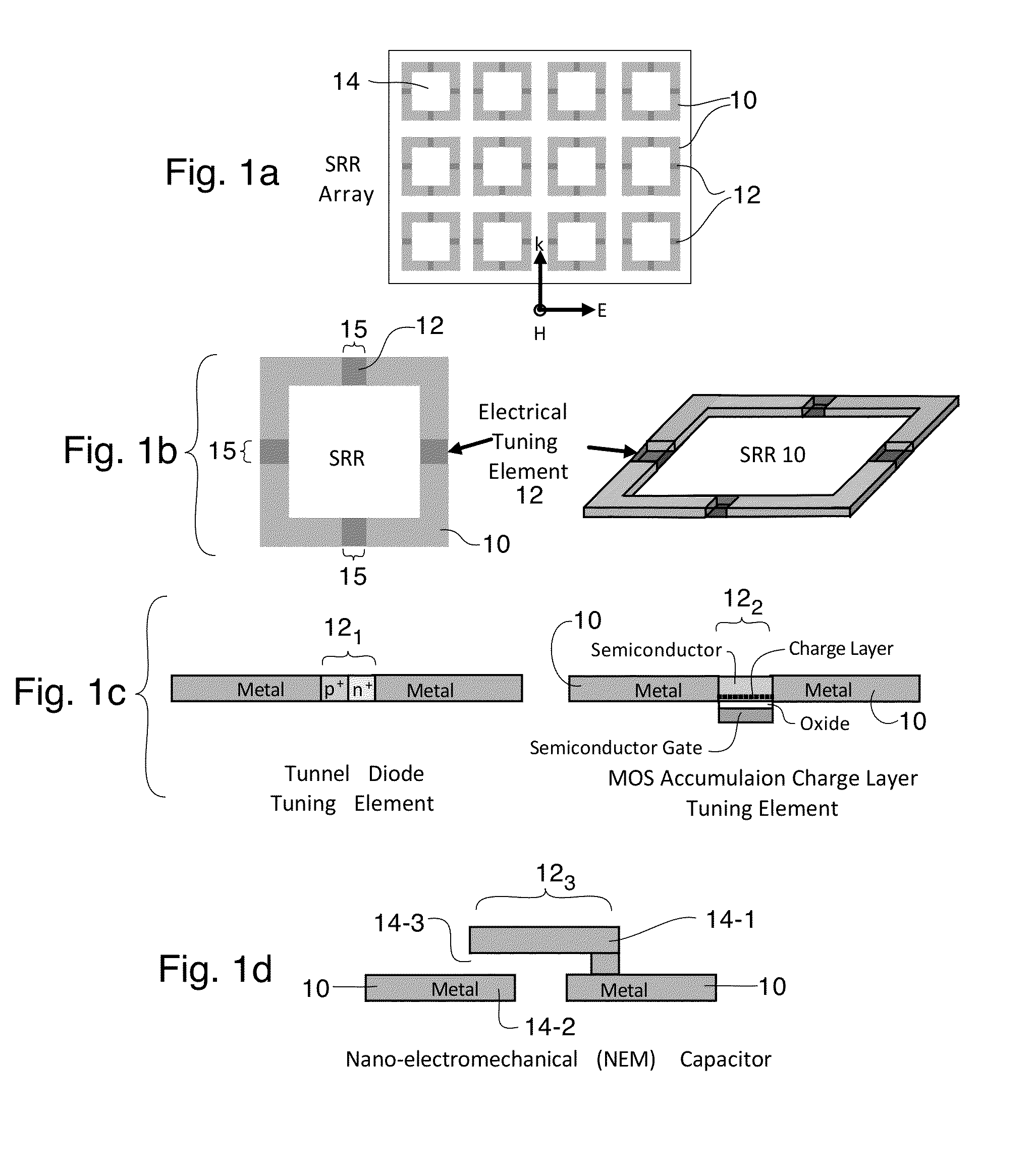Tunable optical metamaterial
a metamaterial and optical technology, applied in the field of tunable optical metamaterials, can solve the problems of limited temperature operation range, significant deformation of lc response time, and slow steering speed (10's of ms range)
- Summary
- Abstract
- Description
- Claims
- Application Information
AI Technical Summary
Benefits of technology
Problems solved by technology
Method used
Image
Examples
Embodiment Construction
[0023]The tunable optical metamaterial is composed of a two-dimensional array of sub-wavelength-scale resonant metallic structures 10 with integrated nano-scale voltage-controllable electrical tuning elements 12 disposed in the sides thereof in an exemplary embodiment as shown in FIG. 1a. The metallic unit-cell structures 10 are preferably disposed on a dielectric substrate 20 for support and are designed to have electrical resonances preferably at optical frequencies (i.e. electromagnetic radiation having a wavelength longer than 0.4 microns (blue / violet end of the visible spectrum) and shorter than 0.3 mm (1 terahertz frequency)), which can be achieved by reducing their dimensions to sub-micron scales. If the metallic unit-cell structures 10 are to be used at lower optical frequencies (such infrared, terahertz), then their sizes may be increased accordingly.
[0024]There are a number of metallic structures 10 that have electrical resonances at optical frequencies such as metallic sp...
PUM
| Property | Measurement | Unit |
|---|---|---|
| temperatures | aaaaa | aaaaa |
| temperatures | aaaaa | aaaaa |
| wavelength | aaaaa | aaaaa |
Abstract
Description
Claims
Application Information
 Login to View More
Login to View More - R&D
- Intellectual Property
- Life Sciences
- Materials
- Tech Scout
- Unparalleled Data Quality
- Higher Quality Content
- 60% Fewer Hallucinations
Browse by: Latest US Patents, China's latest patents, Technical Efficacy Thesaurus, Application Domain, Technology Topic, Popular Technical Reports.
© 2025 PatSnap. All rights reserved.Legal|Privacy policy|Modern Slavery Act Transparency Statement|Sitemap|About US| Contact US: help@patsnap.com



